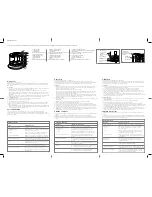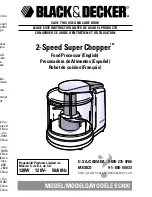SYNCHRONOUS SERIAL INTERFACE (SSI)
MOTOROLA
PORT C
6 - 123
lected to be outputs; these bits are undefined if they are selected to be inputs. SC1 and SC2
can also be used as general-purpose parallel I/O.
Figure 6-66 shows a continuous clock (from either an external source or the internal
clock), which means that frame sync must be a separate signal. SC2 is used for frame
sync, which can come from an internal or external source. Since both the transmitter and
receiver use the same clock (synchronous configuration), both use the SCK pin. SC0 and
SC1 are designated as flags or can be used as general-purpose parallel I/O.
Figure 6-67 shows a continuous clock (from either an external source or the internal
clock), which means that frame sync must be a separate signal. SC1 is used for the re-
ceive frame sync, and SC2 is used for the transmit frame sync. Either frame sync can
come from an internal or external source. Since the transmitter and receiver use different
clocks (asynchronous configuration), SCK is used for the transmit clock, and SC0 is used
for the receive clock.
6.4.7.1.4
Frame Sync Selection
The transmitter and receiver can operate totally independent of each other. The transmit-
ter can have either a bit-long or word-long frame-sync signal format, and the receiver can
have the same or opposite format. The selection is made by programming FSL0 and FSL1
in the CRB as shown in Figure 6-68.
1. If FSL1 equals zero (see Figure 6-69), the RX frame sync is asserted during
the entire data transfer period. This frame sync length is compatible with
Motorola codecs, SPI serial peripherals, serial A/D and D/A converters, shift
registers, and telecommunication PCM serial I/O.
2. If FSL1 equals one (see Figure 6-70), the RX frame sync pulses active for one
bit clock immediately before the data transfer period. This frame sync length is
compatible with Intel and National components, codecs, and telecommunica-
tion PCM serial I/O.
The ability to mix frame sync lengths is useful in configuring systems in which data is re-
ceived from one type device (e.g., codec) and transmitted to a different type device.
FSL0 controls whether RX and TX have the same frame sync length (see Figure 6-68). If
FSL0 equals zero, RX and TX have the same frame sync length, which is selected by
FSL1. If FSL0 equals one, RX and TX have different frame sync lengths, which are se-
lected by FSL1.
The SSI receiver looks for a receive frame sync leading edge only when the previous
F
re
e
sc
a
le
S
e
m
ic
o
n
d
u
c
to
r,
I
Freescale Semiconductor, Inc.
For More Information On This Product,
Go to: www.freescale.com
n
c
.
..


















